Taisan is a soft and fluffy Filipino chiffon cake. It is popularly served as an afternoon snack or midmorning pick-me-up.
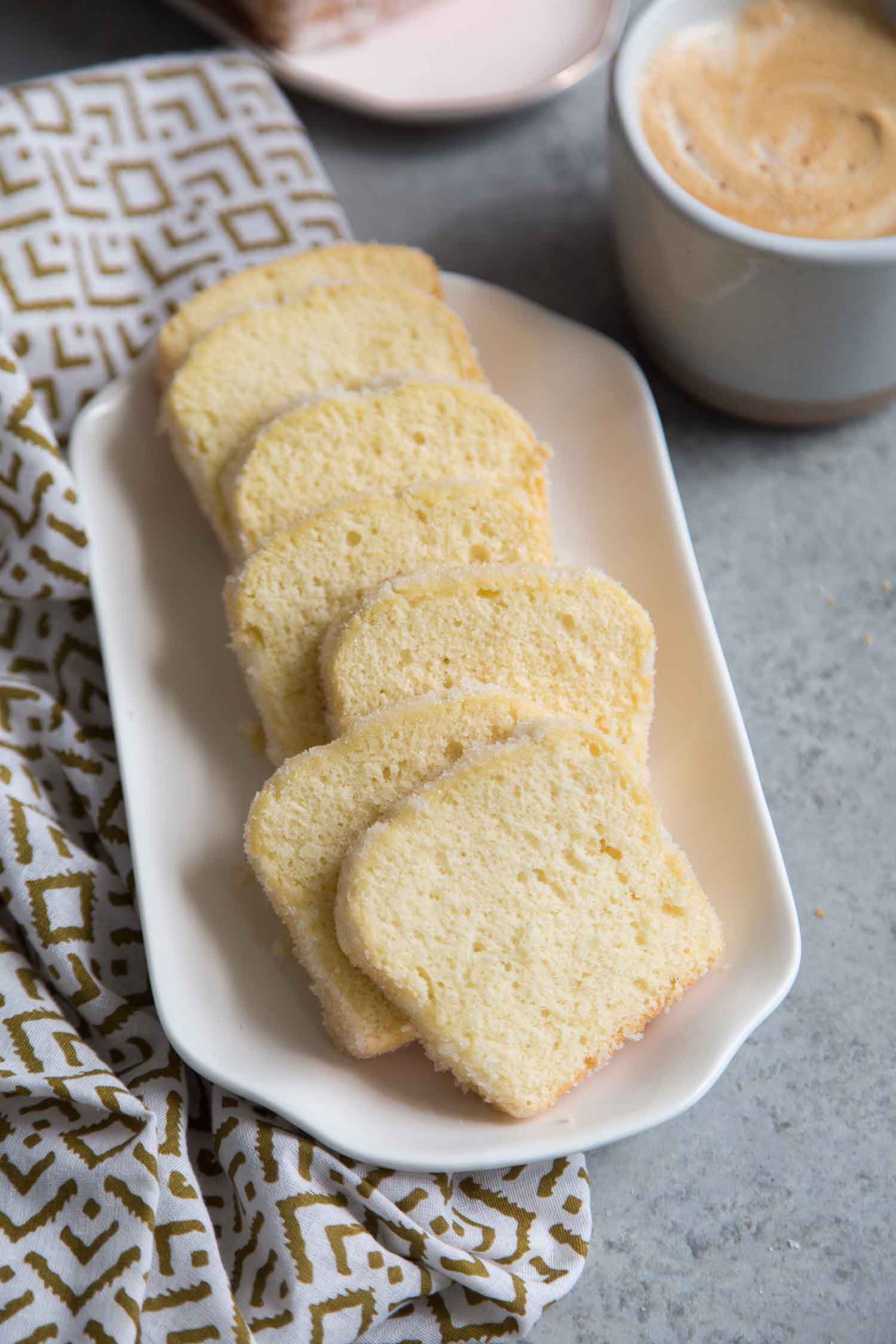
As a first generation Filipino-American, I was lucky to be near multiple Filipino markets, a good selection of Filipino restaurants, and most important- plenty of Filipino bakeries.
Red Ribbon was my favorite Filipino bake shop.
I went there frequently with my parents to fill up on pandesal, chicken empanadas, and taisan!
Table of Contents
Taisan Cake
Taisan is a Filipino chiffon cake. I’m not sure where the name “taisan” originated from, or what it means. I asked friends and family, but no one seems to know the answer.
I ate countless slices of taisan as a kid. It’s the perfect little treat any time of day.
As a child, I enjoyed it with Filipino hot chocolate or warm milk. Nowadays, I prefer it with cold brew coffee or a strong latte.
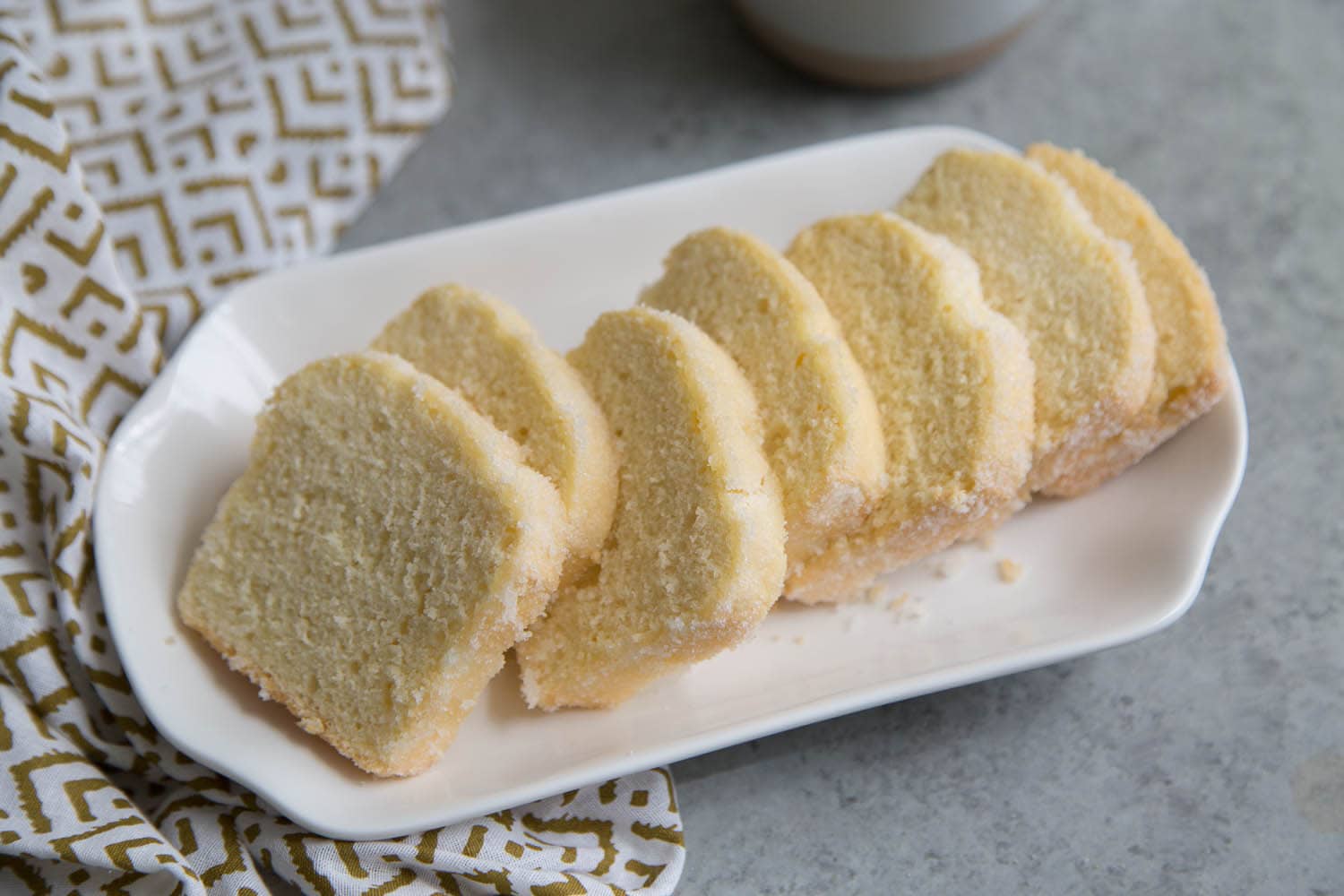
What is a chiffon cake? How does it differ from a sponge cake?
Chiffon cake is a light and fluffy cake made with flour, baking powder, eggs, sugar, and vegetable oil.
The cake is leavened with baking powder and whipped egg whites.
Sponge cake, also known as a genoise, is made with flour, sugar, eggs, and melted butter.
Genoise batter usually doesn’t use chemical leavening (baking powder). Instead it relies on the aeration and volume created during mixing the batter.
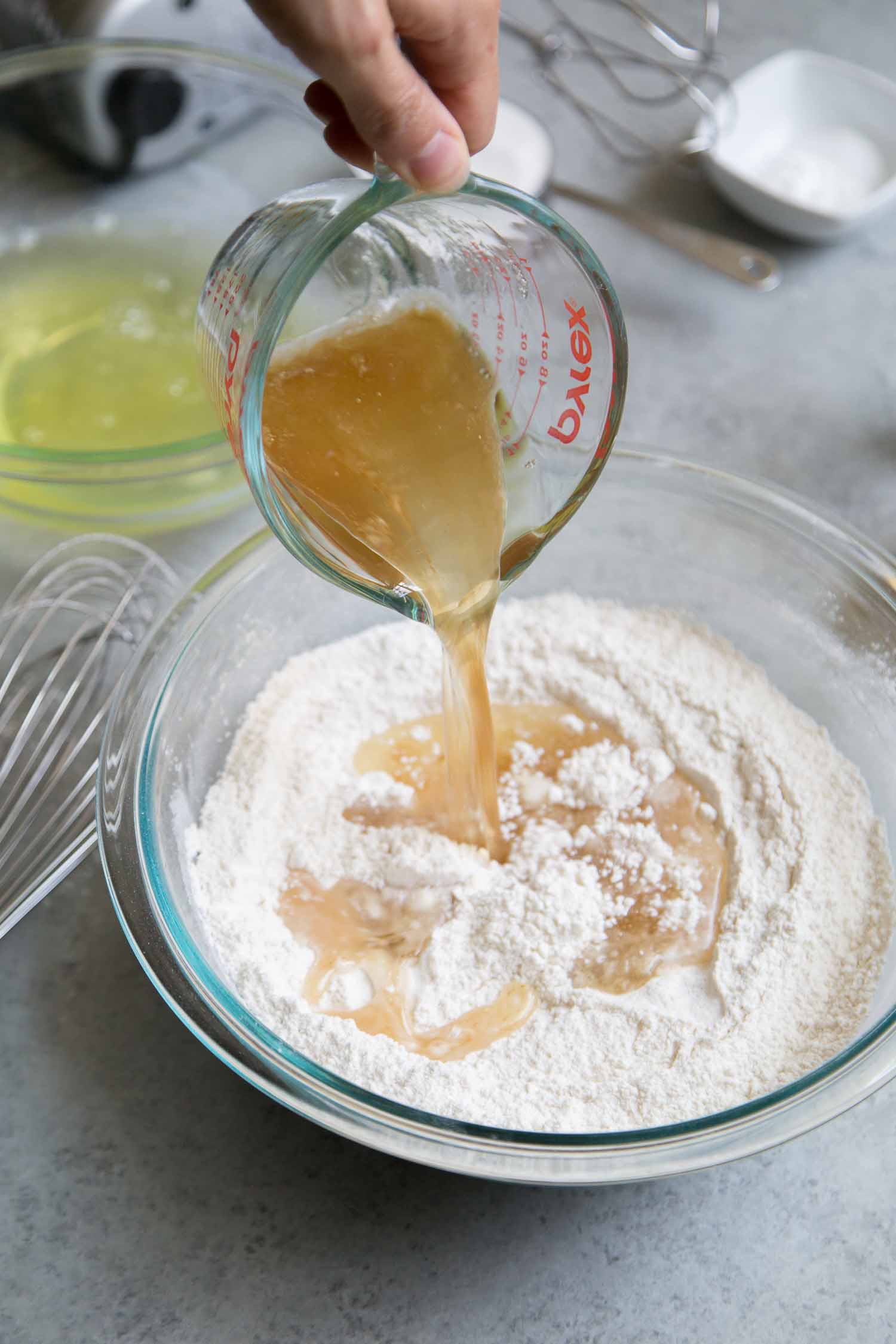
How to make easy Taisan (Filipino Chiffon Cake):
A stand mixer is not necessary for making taisan. I suggest using an electric hand mixer, but with a strong arm and a little effort, this taisan cake can also be whipped together by hand.
You’ll need two bowls. In a large bowl, combine all the dry ingredients: cake flour, baking powder, sugar, and salt. To that bowl, add egg yolks, water, vegetable oil, and vanilla. This gets mixed together until it’s smooth and thick.
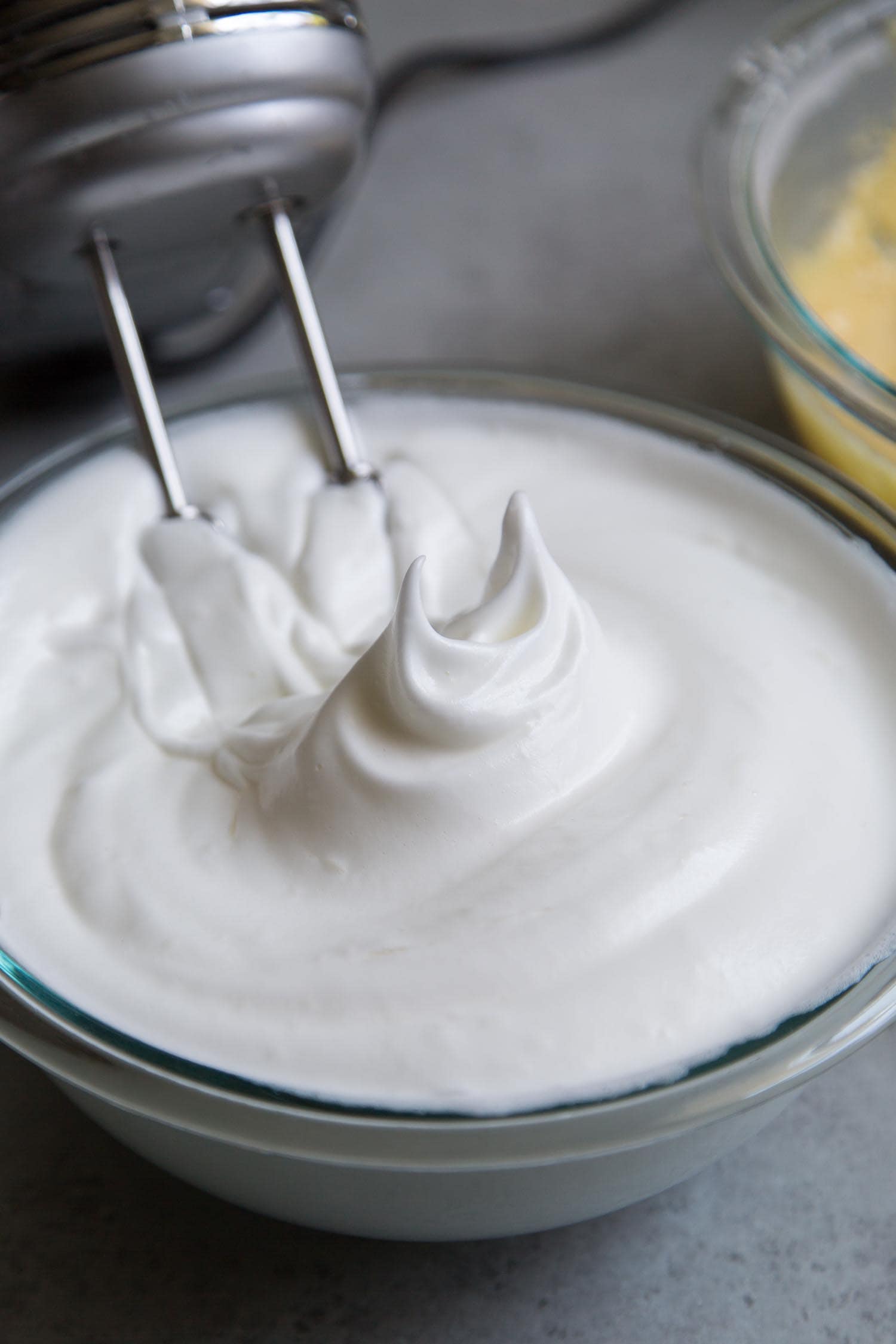
In a separate bowl, egg whites are whipped with cream of tartar and sugar to stiff peaks. At stiff peaks the egg whites should be able to stand straight up when the beaters are lifted from the mixture.
Be careful not to overwhip because the egg whites will start to separate.
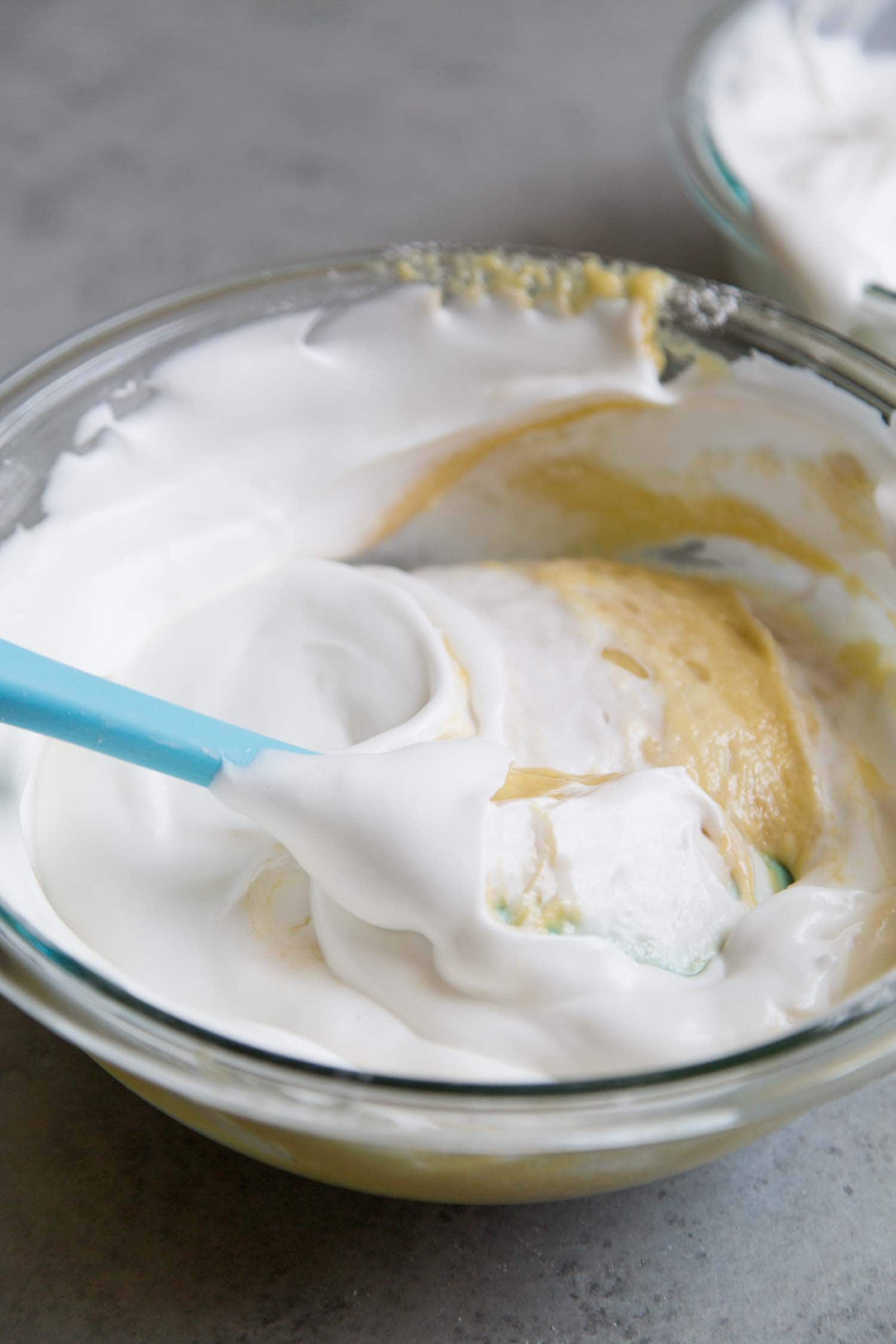
Tips on whipping egg whites:
- Make sure the bowl is clean! Ensure there are no traces of oil or fat, which will prevent egg whites from whipping correctly.
- Egg whites whip stronger bonds at room temperature. (However, it is much easier to separate eggs while cold.)
- Start whipping egg whites at the lowest (slowest) speed until the mixture if foamy like freshly poured beer.
- After whites are foamy, increase speed and slowly add granulated sugar about one tablespoon at a time. Once all the sugar has been added, increase speed until whites have reached stiff peaks
Why add cream of tartar to egg whites?
Cream of tartar, also known as tartaric acid or potassium hydrogen tartrate, aids in strengthening the bonds of whipped egg whites.
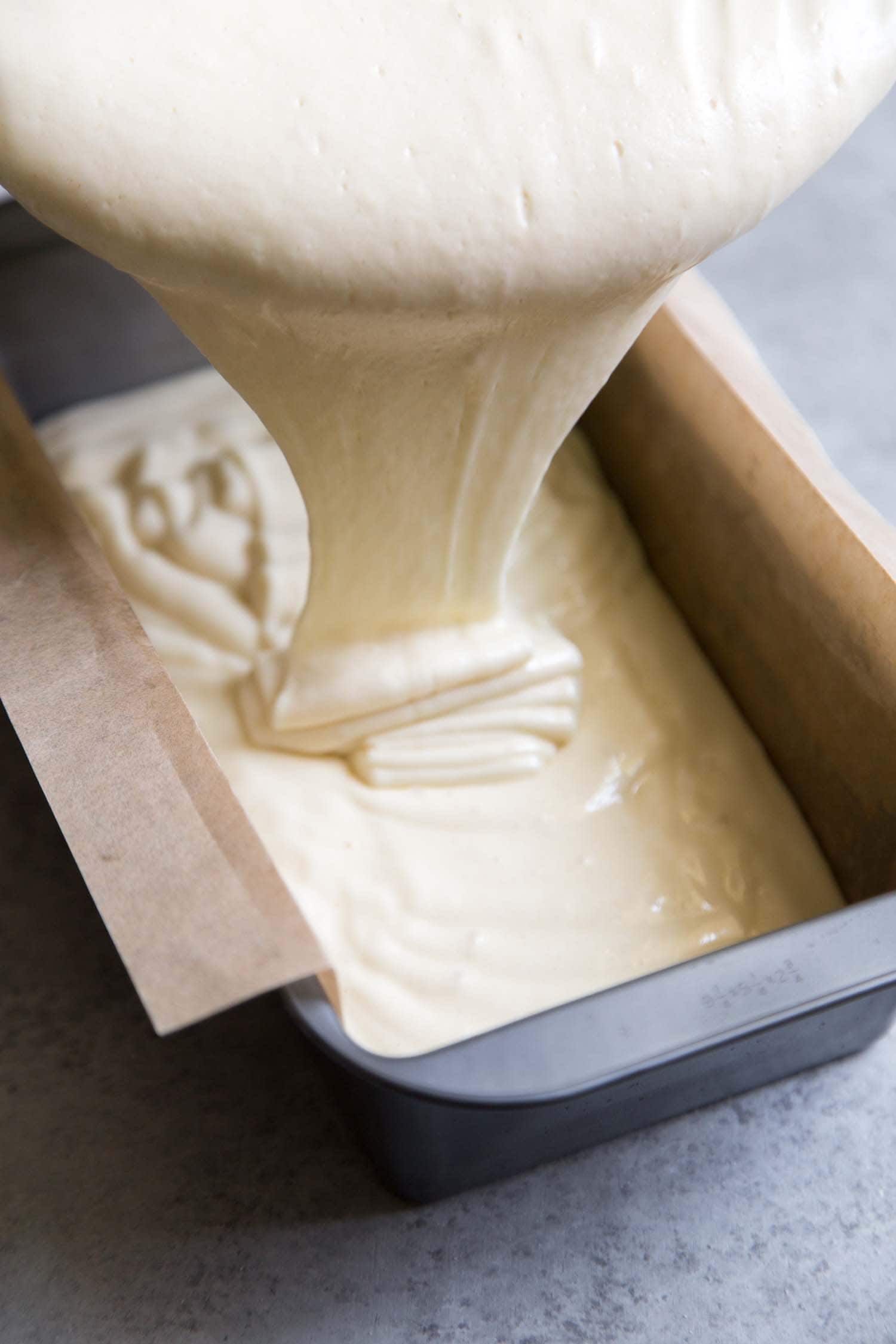
When folding ingredients, the lighter mixture should be added to the denser mixture. In this case, the whipped egg whites will be added to the dense flour mixture.
The egg whites should be added in three additions to ensure thorough mixing. This will also help to keep the aeration from the egg whites from deflating too much.
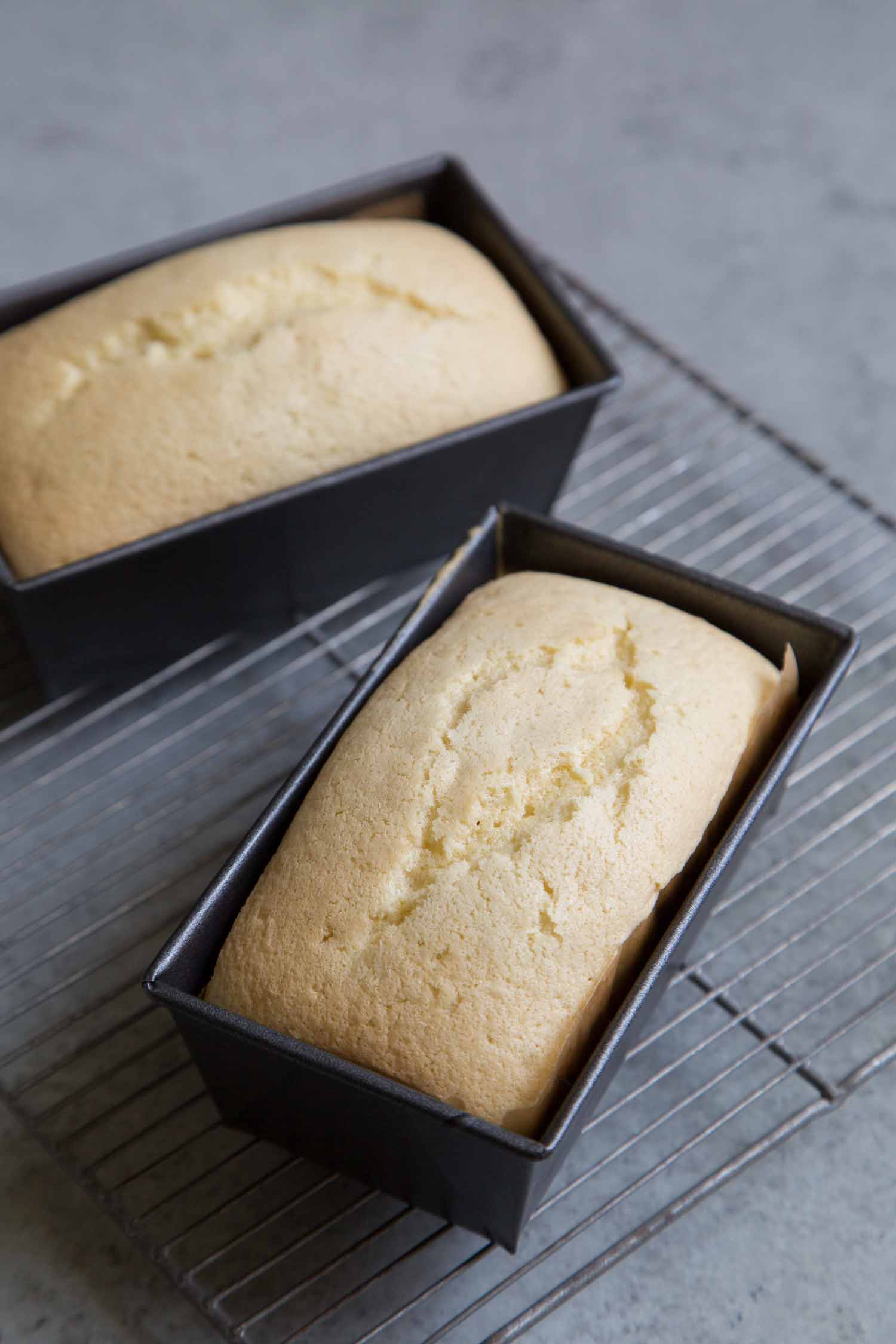
How to serve Taisan
This recipe makes enough for two 9×5-inch loaf pans or multiple mini pans. After baking, the warm taisan cakes are brushed with melted salted butter and coated with granulated sugar.
The taisan cakes can be served warm or at room temperature. They remain soft and moist for a few days, but it’s best served within two days of baking.
I suggest sharing the loafs with friends and family. They’ll surely appreciate it!
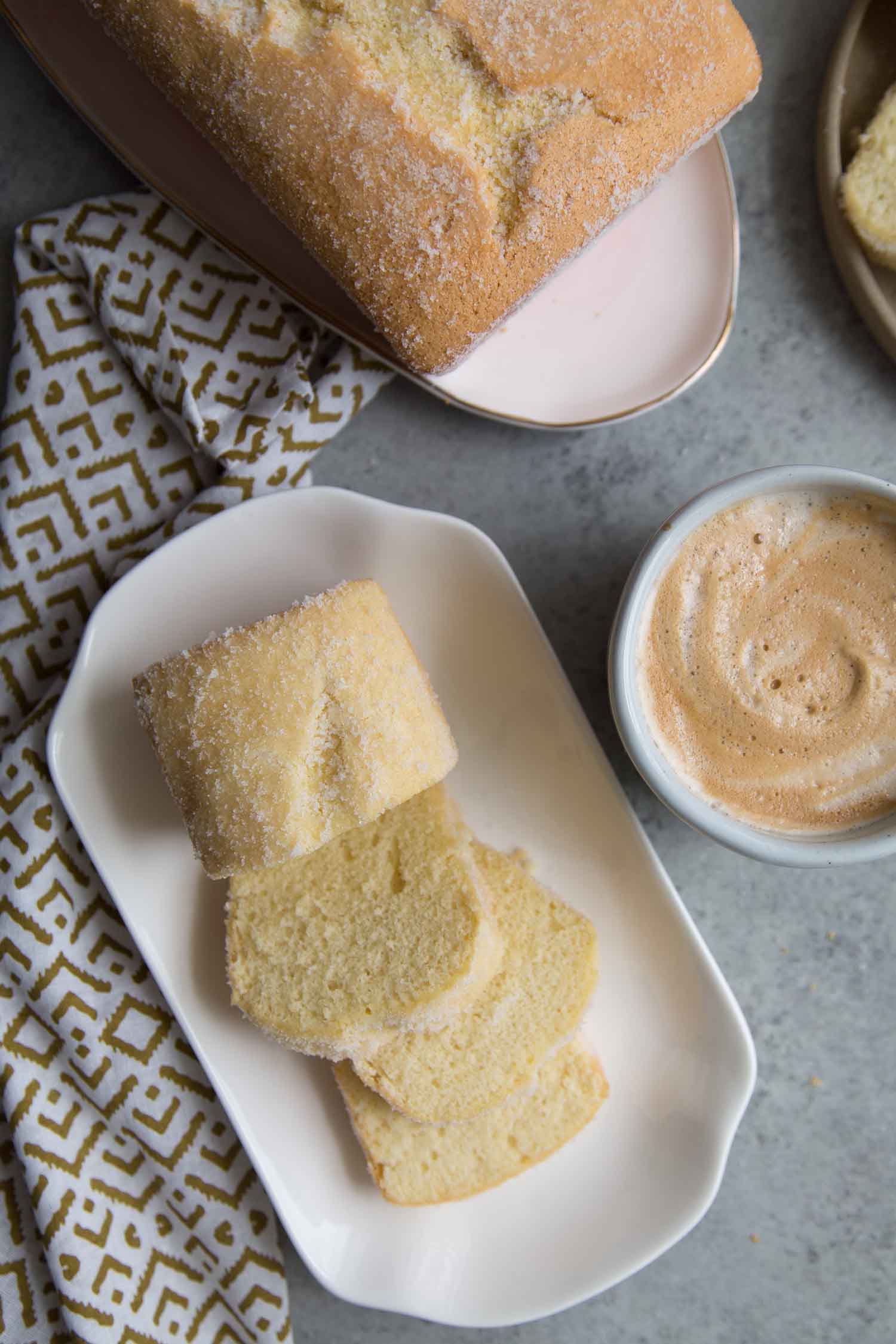
Taisan Filipino Chiffon Cake
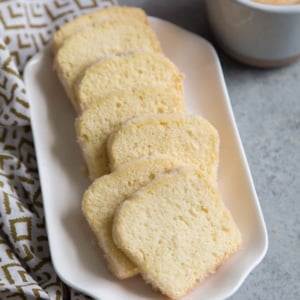
Equipment
- 2 9×5-inch loaf pans
- stand mixer or electric hand mixer
Ingredients
- 2 cups cake flour
- 1 Tablespoon baking powder
- ¼ teasponn fine sea salt
- 1 cup granulated sugar,, divided
- ½ cup vegetable oil
- ½ cup water
- 2 teaspoons vanilla extract
- 6 large egg yolks
- 1 cup egg whites , (about 7 large egg whites), room temperature
- 1 teaspoon cream of tartar
- melted salted butter, , for brushing
- additional granulated sugar,, for coating
Instructions
- Preheat oven to 350°F. Grease and line two 9×5-inch loaf pans with parchment paper.* Set aside.
- In a large bowl, sift together cake flour, baking powder, salt, and ½ cup of sugar. Whisk in sugar. In another bowl, whisk together oil, water, vanilla, and egg yolks. Add wet yolk mixture to dry flour mixture. Mix until thick and smooth. Set aside.
- In another bowl, whip egg whites on low speed until foamy. Add cream of tartar and continue to whip on low speed. Add sugar one tablespoon at a time while mixing. Once all the sugar has been added, increase mixing speed and whip to stiff peaks.
- Add whipped egg whites to cake batter in three additions. Using a sturdy spatula, gently fold in ⅓ of egg whites into cake batter. Adding egg whites in three additions will ensure thorough mixing and this will also keep the volume of whipped white eggs from deflating.
- Pour cake batter into prepared loaf pans. Bake 9×5-inch loaf pans for 33-35 minutes until toothpick inserted in pan comes out clean. Alternatively, bake mini 3.25×5.5-inch loaf pans for 20-25 minutes. Allow cakes to cool in pan for 3-5 minutes before unmolding.
- After unmolding, liberally brush warm cakes with melted salted butter. Roll warm buttered cakes in granulated sugar. Use a serrated knife to slice cake into portions. Serve warm or at room temperature. Store any leftover cakes in an airtight container for up to 4 days.
Notes
- Alternatively, use one 9×5-inch loaf pan and two mini 3.25 x 5.5-inch loaf pans OR five mini 3.25 x 5.5-inch loaf pans
- Egg whites whip stronger bonds at room temperature. However, it is easier to separate egg whites from egg yolks while eggs are cold.
- Make sure egg white bowl is clean. Any traces of oil or fat may hinder egg whites from whipping.
- Be careful not to over-whip egg whites. Egg whites will separate.
Nutrition
Nutrition information is automatically calculated, so should only be used as an approximation.
 Like this recipe? Rate & comment below!
Like this recipe? Rate & comment below!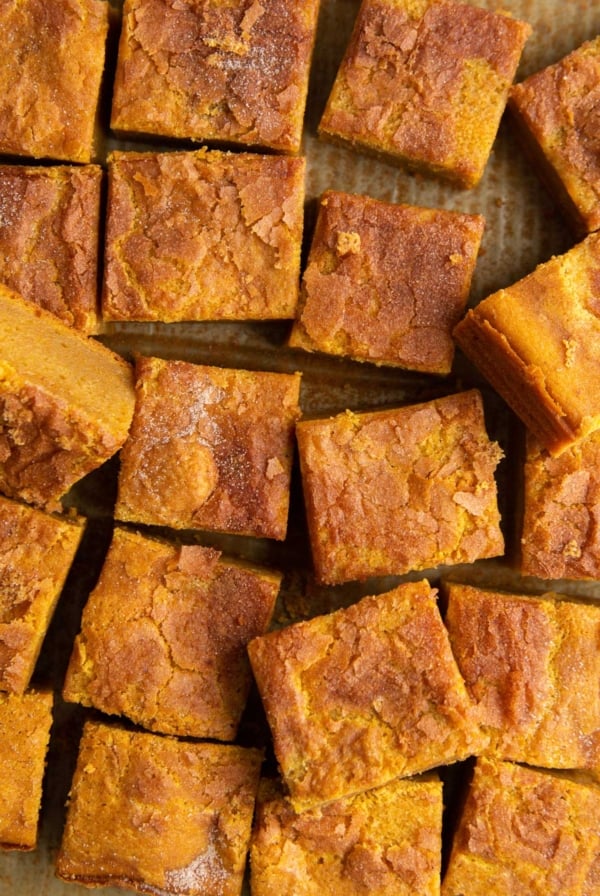
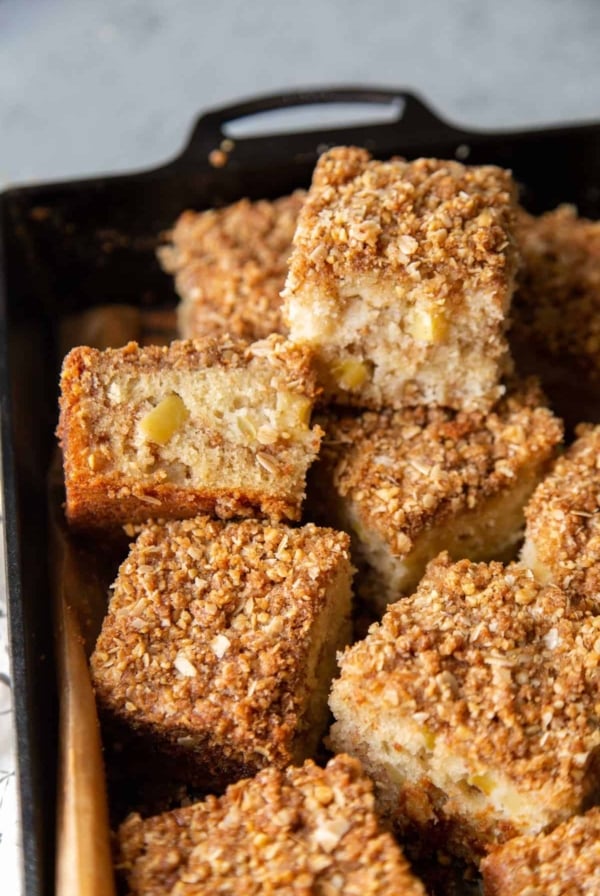
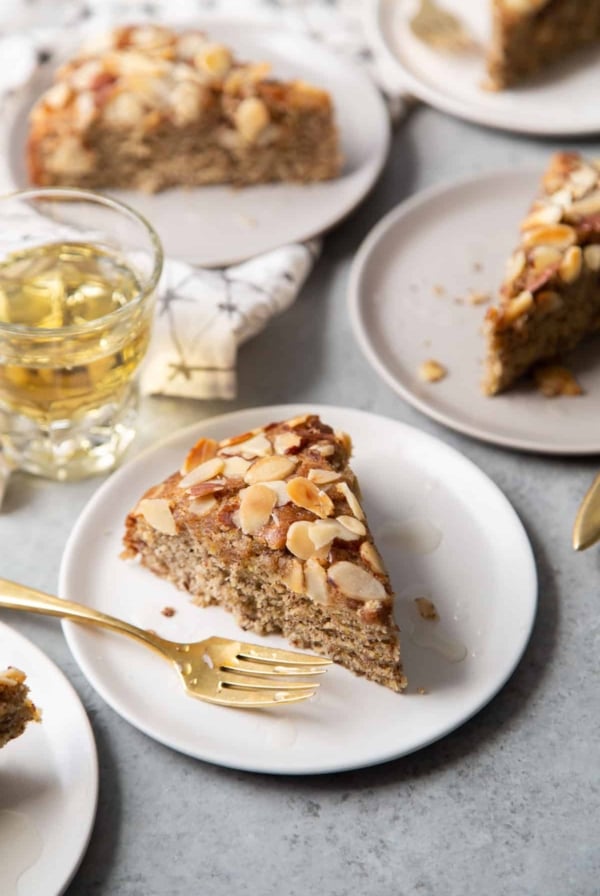
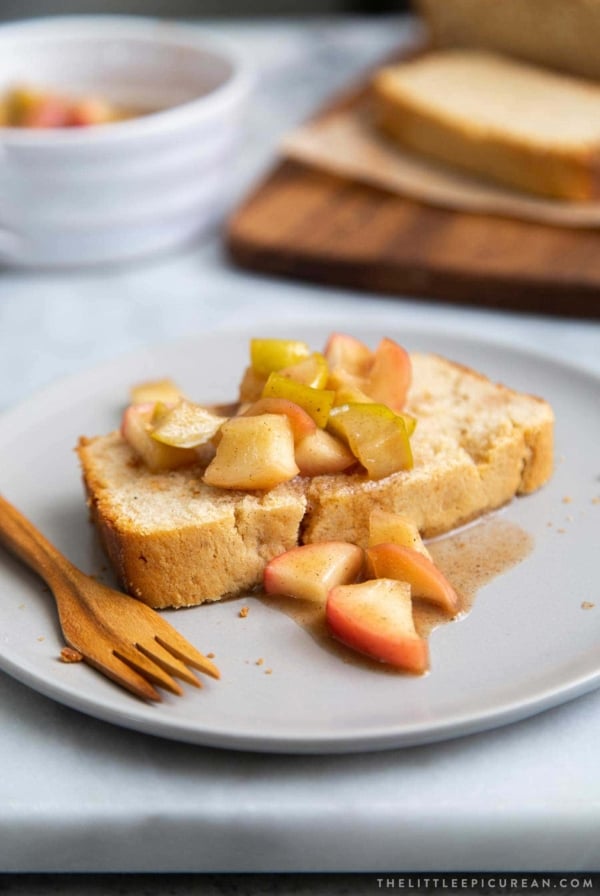





Tried your recipe and family loved eating this after dinner. Thank for sharing your recipes. Can I request recipe for Monay loaf aka Goldilocks Monay and Bulacan inipit and artisan bread recipes. Cheers from Alexandria VA.
Thank you for trying the recipe. I’m glad your family liked it! Monay is on my to do list! I have never tried Bulacan inipit…so I wouldnt know how to make it. :(
Hi! I only have one loaf pan. Is it fine to set the batter aside outside (I live in Singapore) while the first batch is baking? Thanks!
Do you have any other cake pan you can bake it in? I don’t suggest letting the batter sit too long because the egg whites will deflate and the liquid will separate.
Hello. Taisan originated from Pampanga, Philippines. It is named Taisan for its shape which is that of a sharpening stone or “hasaan.” TAISAN literally means whetstone in the local dialect.
Hello. I am guessing it is called Taisan because it is a version of the traditional steam cake enjoyed by people whose ancestry originates in Taishan, China. My father was from this region, which he called Toy Sun. This was one of the few desserts made by my Chinese relatives. Most people bake their Chinese “steamcake” nowadays. There’s a great version online from the San Diego Chinese Women Society.
I have been delighted with your cake recipes. We have so many Fall birthdays that we have one big family party and I make 7 little cakes, all different. I think all but one of my cake recipes came from your site last year. Thanks for your creative work!
Whoa! Thanks for sharing that. The name of the cake makes sense now!
Thank you for trying out the recipes! I’m so glad you have enjoyed them!